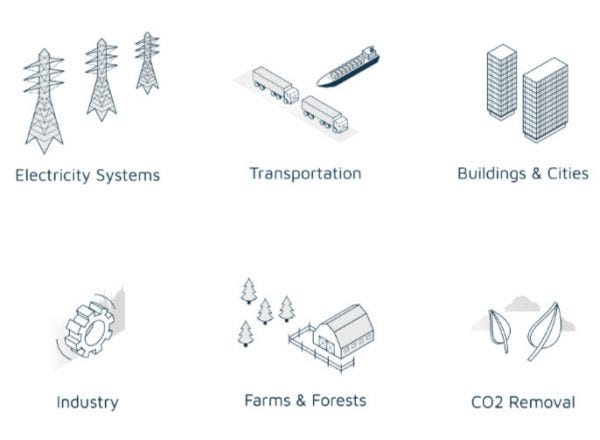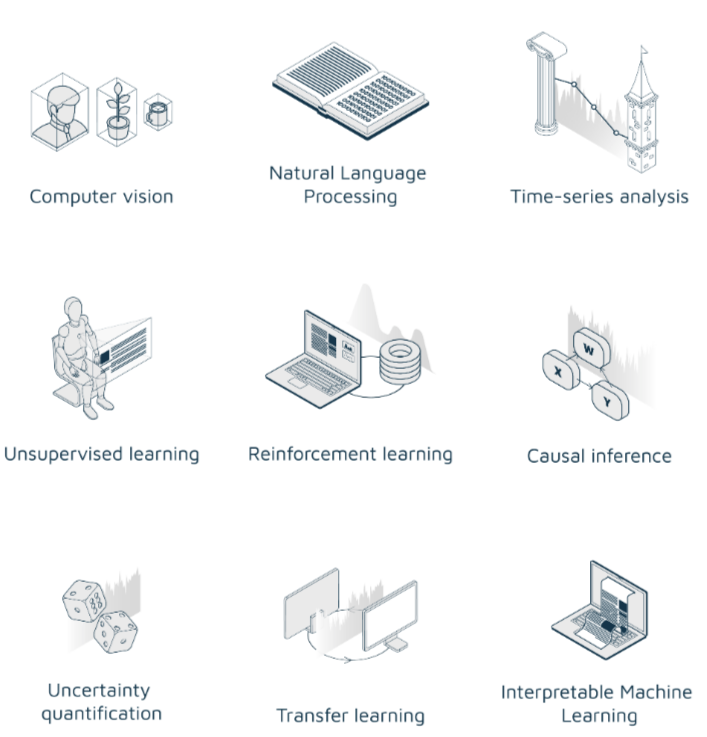
AI for Good: An Exploratory Approach to Tackling Climate Change with Data Science
Last Updated on July 20, 2023 by Editorial Team
Author(s): Tadeusz Bara-Slupski
Originally published on Towards AI.
Technology and Climate Change
Technology has been a tool that has brought unprecedented prosperity to humanity. It allowed us to extract resources, transform, and transport them with ever-increasing efficiency. It brought about the contemporary global economy, transforming 75% of all land in the process. However, this prosperity has come at a cost to our planet and its ecosystems to an extent, which now poses an existential threat to us and all other species on earth.
Indeed, in spite of what some prominent public figures might claim, it has recently been revealed that far from being “alarmists”, the scientific community has in fact been underestimating the unfolding of climate change and its impacts. We might be headed towards reaching the widely quoted figure of a global 2°C increase much faster than anticipated, by which point feedback loops in ecosystems might make any mitigation efforts fruitless. We are already getting a taste of what is likely to come in the coming decades as our planet warms — droughts, fires, flooding, storms, all growing in severity. The associated social and biodiversity issues emerge with increasing climate-related migration of people from the most affected areas and the sixth mass extinction of plants and animals, now dubbed the Anthropocene extinction, for having its roots in human activity.
The international community, a network of concerned governmental actors, academia, NGOs, social businesses and activists are addressing climate change through mitigation and adaptation efforts. Mitigation entails reducing greenhouse gas emissions through innovation in electricity systems, industry, agriculture, forestry, and cities. Adaptation recognizes that regardless of our mitigation efforts, changes to the climate are inevitable and employ solutions to better predict the emerging risks to plan for resilience and disaster management.
Technology is being applied to assist in these efforts. Machine Learning(ML) and Artificial Intelligence (AI), being at the forefront of technological innovation, are yet to be fully utilized. The rate of progress in this area is exponential and even the practitioners cannot anticipate what the coming decades will bring. Indeed, some problems that had been considered virtually insurmountable 5 or 10 years ago have now been solved. Without a doubt, ML and AI are powerful tools that can be used to fight the greatest threats facing our planet.
However, the untapped potential of ML to enhance these efforts requires communication. On the one hand, we have an eager community of ML practitioners, on the other, we have a multitude of stakeholders fighting climate change. Whilst the ML practitioners may find it difficult to find the most impactful areas for their solutions, the stakeholders in the climate change community may lack the resources to identify the ML solutions that might best assist in forwarding their respective causes.
Tackling Climate Change with Machine Learning and its Challenges
Tackling Climate Change with Machine Learning, a recent paper produced as a collaboration of 22 scholars and practitioners from academia, NGOs and the private sector, attempts to address this issue. It presents a comprehensive overview of the applications of ML to various areas of the fight against climate change. The work is a valuable resource for both ML practitioners and stakeholders and can serve as an inspiration for what is possible.
The authors organize the paper into 13 chapters, each dealing with a different domain of climate change solutions:


The relevant areas of ML are then discussed for each of these domains including:

Whilst these lists might not be exhaustive, they provide a starting point for both the IT industry and the climate change stakeholders. Delving deeper into the paper helps to further understand both the challenges in the climate change effort and the different ML solutions available. The paper has intuitive appeal as the authors further classify each particular area’s likelihood of benefiting from ML solutions.
While the potential becomes clear, however, it is not without its caveats. The authors draw attention to one such issue, namely the Jevons paradox. The Jevons paradox occurs when the improvement in efficiency generates greater demand for service thereby nullifying or even worsening the anticipated positive outcome. For instance, ML can find applications in precision agriculture. However, this increased precision, whilst hopefully reducing the GHG impact of any particular farming enterprise might, in fact, lead to greater overall uptake of intensive agriculture in favor of less intensive, sustainable modes of farming.
Similar issues have plagued the adoption of new technology to sustainability efforts in general. Recent history is filled with examples of solutions being applied to problems without a holistic approach, which would have allowed us to anticipate the undesirable outcomes. For instance, biofuel production became popular a decade ago, when Western countries mandated the use of vegetable oils in biofuels. Fast forward to today, the push towards biofuels resulted in massive deforestation in Indonesia as rainforests were transformed into palm oil farms. Perhaps a less techno-centric approach would have prevented these problems in the first place.
Our approach
Therefore, at Appsilon Data Science we advocate an exploratory approach towards utilizing ML to address climate change. Tech companies can provide inspiration to stakeholders fighting climate change by showcasing the technologies, but the problems should be defined by the practitioners in this area in a collaborative manner. Rather than finding exciting applications for ML solutions, the tech community should welcome inquiries from governments, NGOs and other actors. To this end, Appsilon launched an AI for Good initiative and I feel privileged to be its leader.
Thanks for reading. You can find me on Twitter @tbaraslupski
Join thousands of data leaders on the AI newsletter. Join over 80,000 subscribers and keep up to date with the latest developments in AI. From research to projects and ideas. If you are building an AI startup, an AI-related product, or a service, we invite you to consider becoming a sponsor.
Published via Towards AI
Take our 90+ lesson From Beginner to Advanced LLM Developer Certification: From choosing a project to deploying a working product this is the most comprehensive and practical LLM course out there!
Towards AI has published Building LLMs for Production—our 470+ page guide to mastering LLMs with practical projects and expert insights!

Discover Your Dream AI Career at Towards AI Jobs
Towards AI has built a jobs board tailored specifically to Machine Learning and Data Science Jobs and Skills. Our software searches for live AI jobs each hour, labels and categorises them and makes them easily searchable. Explore over 40,000 live jobs today with Towards AI Jobs!
Note: Content contains the views of the contributing authors and not Towards AI.














